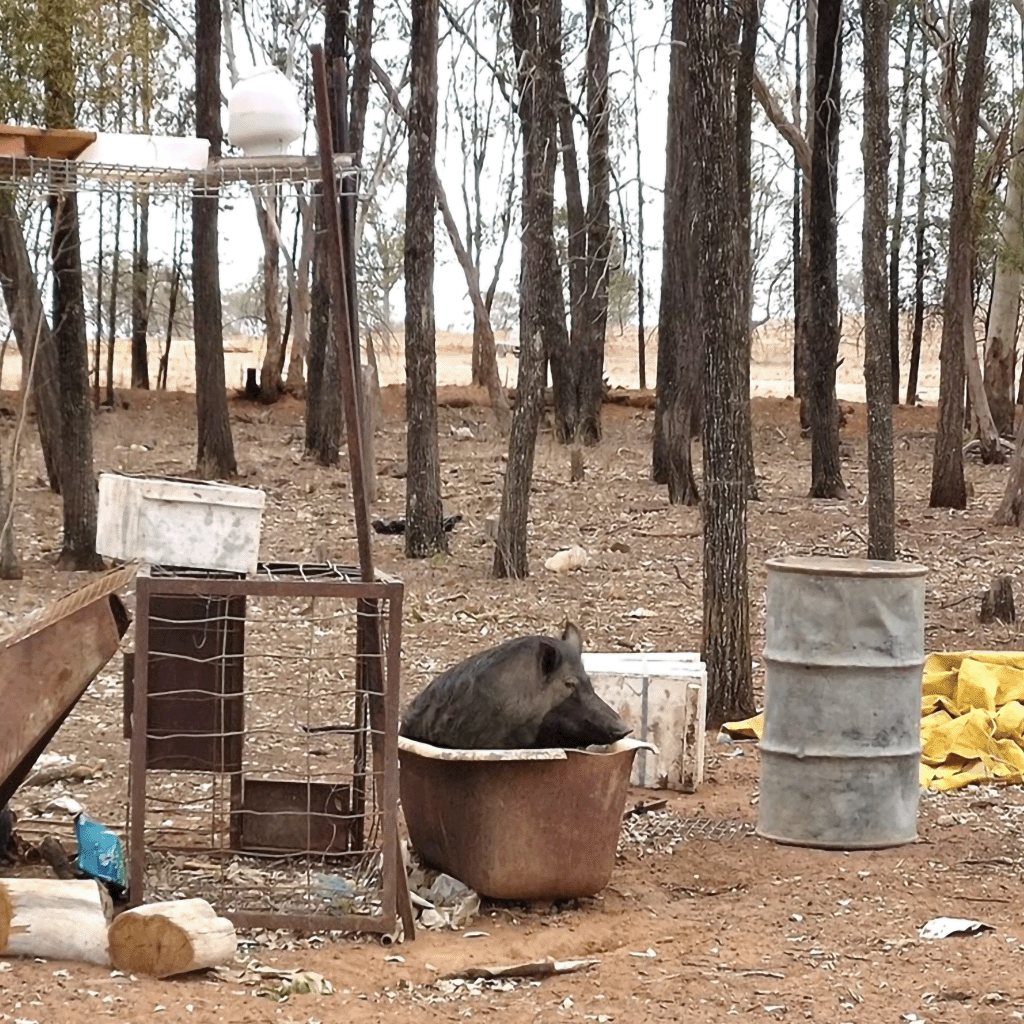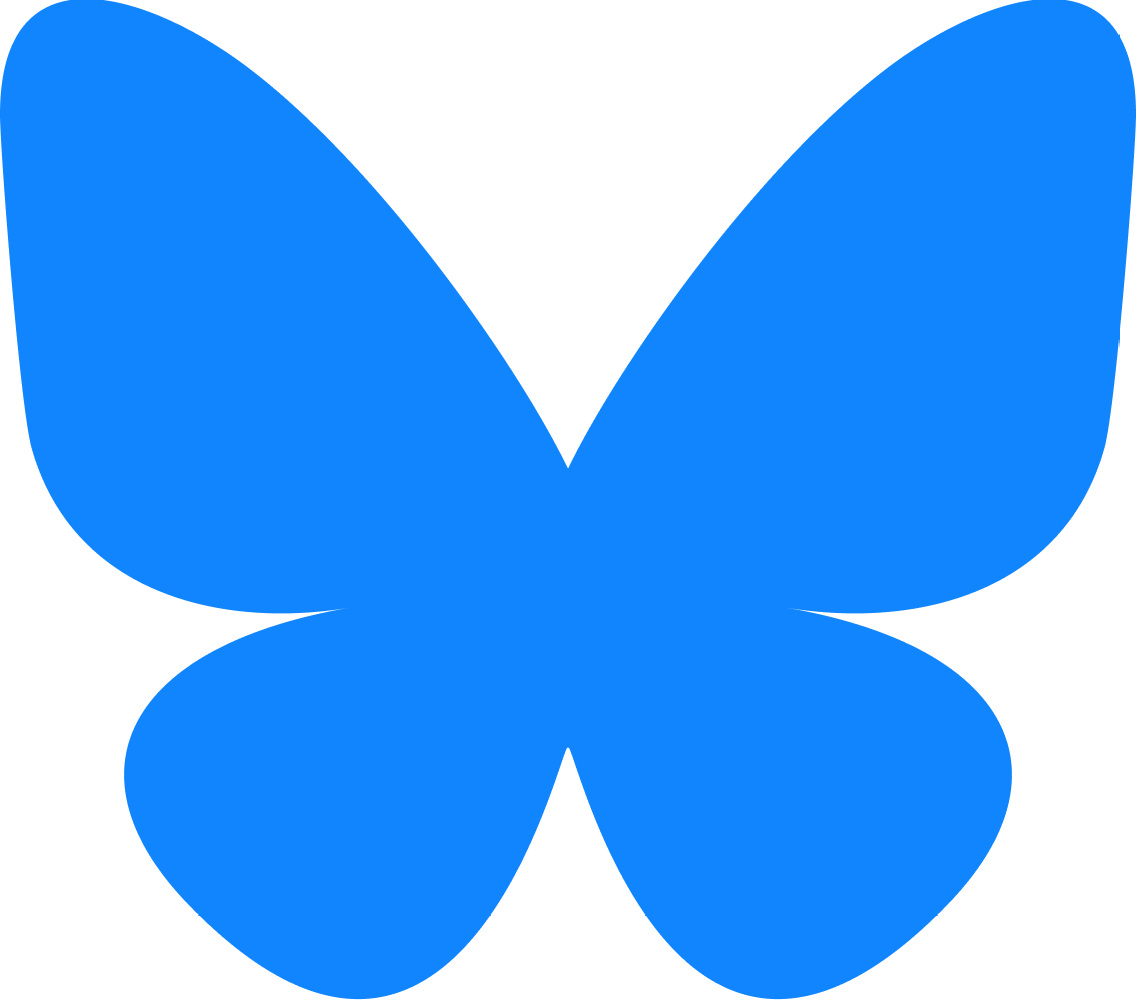The Feral at Home
The Rogue Trajectory and Unexpected Relations of a “Feral Pig”
DOI:
https://doi.org/10.52537/humanimalia.13814Keywords:
feral, australia, ethics, relationality, more-than-humanAbstract
A feral pig in Australia is an introduced pig who lives beyond the constraints of human husbandry or expresses wild physiological traits. These animals are typically characterized as alien, overwhelmingly destructive, and toxic. The only acceptable relation is to kill them. I met Pig-pig during a series of interviews — she was a wild-caught pig living on the property of Scott, a pig hunter. Primarily drawn from conversations with Scott, this paper is an account of Pig-pig that explores a feral pig trajectory that partially existed outside of dominant discourses and practices. Writing about Pig-pig and Scott helps expand our understanding of feral pigs (and hunters) — including who they are and who they can be with. It also requires being attuned to a more-than-human agency that exceeds apprehension and determination, to a degree. First, I analyse how this individual animal eludes common categories and ways of enacting feral pigs. Next, I explore the unexpected and compelling relations she developed and consider how her place in an unauthorized multispecies home enabled her to become Pig-pig. Finally, I ask how Pig-pig was still alive and what it reveals about the limits of Scott’s power and the obligations he had towards other claims on Pig-pig, by human and nonhuman alike. The paper concludes with Pig-pig being killed, demonstrating the limits of alternate trajectories of pig becoming in a world geared towards their death.
Downloads
References
Adams, Michael. “‘Redneck, Barbaric, Cashed Up Bogan? I Don’t Think So’: Hunting and Nature in Australia.” Environmental Humanities 2, no. 1 (2013): 43–56. https://doi.org/10.1215/22011919-3610342.
Arregui, Aníbal G. “Reversible Pigs: An Infraspecies Ethnography of Wild Boars in Barcelona.” American Ethnologist 50, no. 1 (2023): 115–28. https://doi.org/10.1111/amet.13114.
Barad, Karen. Meeting the Universe Halfway: Quantum Physics and the Entanglement of Matter and Meaning. Durham, NC: Duke University Press, 2007.
Baynes-Rock, Marcus. Crocodile Undone. University Park: Pennsylvania State University Press, 2020.
Berger, John. “Why Look at Animals?” In About Looking, 3–38. New York: Vintage, 1980.
Boyd, Madeleine. “Painting with Horses Towards Interspecies Response-ability: Non-human Charisma as Material Affect.” Animal Studies Journal 6, no. 1 (2017): 129–154.
Buller, Henry. “Animal Geographies I.” Progress in Human Geography 38, no. 2 (2014): 308–18. https://doi.org/10.1177/0309132513479295.
Cassidy, Rebecca. “Introduction: Domestication Reconsidered.” In Where the Wild Things Are Now, edited by Rebecca Cassidy and Molly Mullins, 1–25. Oxford: Berg, 2007.
Celermajer, Danielle, and Arian Wallach. “The Fate of the Illegible Animal: The Case of the Australian Wild Donkey.” Animal Studies Journal 8, no. 2 (2019): 229–58. https://doi.org/10.14453/asj.v8i2.14.
Chua, Liana, and Viola Schreer. “Introduction: Heroes and Villains in the Anthropocene.” Environmental Humanities 16, no. 3 (2024): 697–708. https://doi.org/10.1215/22011919-11327284.
Collins, G.H. “Feral Pigs — The Time Bomb.” Australian Veterinary Journal 80, no. 5 (2002): 305–305.
Commonwealth of Australia. “Threat Abatement Plan for Predation, Habitat Degradation, Competition and Disease Transmission by Feral Pigs (Sus scrofa) (2017).” Australian Government, Department of the Environment and Energy, 2017.
Cushing, Nancy. “‘Cunning, Intractable, Destructive Animals’: Pigs as Co-colonisers in the Hunter Valley of New South Wales, 1840–1860.” In Animals Count: How Population Size Matters in Animal–Human Relations, edited by Nancy Cushing and Jodi Frawley, 113–25. London: Routledge, 2018.
Derrida, Jacques. The Animal That Therefore I Am. Translated by David Wills. Edited by Marie-Louise Mallet. New York: Fordham University Press, 2008.
Fair, Hannah, Viola Schreer, Paul G. Keil, Laur Kiik, and Niki Rust. “Dodo Dilemmas: Conflicting Ethical Loyalties in Conservation Social Science Research.” Area 45, no. 2 (2022): 245–53. https://doi.org/10.1111/area.12839.
Fleischmann, Larissa. “More-than-Human Political Geographies: Abjection and Sovereign Power.” Political Geography 107 (2023): 102949. https://doi.org/10.1016/j.polgeo.2023.102949.
Franklin, Adrian. “The Adored and the Abhorrent: Nationalism and Feral Cats in England and Australia.” In The Routledge Handbook of Human–Animal Studies, edited by Garry Marvin and Susan McHugh, 139–53. London: Routledge, 2014.
Franklin, Adrian. Animal Nation: The True Story of Animals and Australia. Sydney: UNSW Press, 2006.
Garvey, Keith. Dinkum Little Aussies. Dubbo: Macquarie Publications, 1980.
Geiger, Martha, and Alice J. Hovorka. “Animal Performativity: Exploring the Lives of Donkeys in Botswana.” Environment and Planning D: Society and Space 33, no. 6 (2015): 1098–117. https://doi.org/10.1177/0263775815604922.
Gentle, M., Cameron Wilson, and John Cuskelly. “Feral Pig Management in Australia: Implications for Disease Control.” Australian Veterinary Journal 100, no. 10 (2022): 492–95. https://doi.org/10.1111/avj.13198.
Govindrajan, Radhika. Animal Intimacies. Chicago: University of Chicago Press, 2018.
Gressier, Catie. “Going Feral: Wild Meat Consumption and the Uncanny in Melbourne, Australia.” Australian Journal of Anthropology 27, no. 1 (2016): 49–65. https://doi.org/10.1111/taja.12141.
Halberstam, Jack. Wild Things: The Disorder of Desire. Durham, NC: Duke University Press, 2020.
Haraway, Donna J. When Species Meet. Minneapolis: University of Minnesota Press, 2008.
Haraway, Donna, Noboru Ishikawa, Scott F. Gilbert, Kenneth Olwig, Anna L. Tsing, and Nils Bubandt. “Anthropologists Are Talking — About the Anthropocene.” Ethnos 81, no. 3 (2016): 535–64. https://doi.org/10.1080/00141844.2015.1105838.
Hartigan, John, Jr. Shaving the Beasts: Wild Horses and Ritual in Spain. Minneapolis: University of Minnesota Press, 2020.
Hill, Kristine, Michelle Szydlowski, Sarah Oxley Heaney, and Debbie Busby. “Uncivilized Behaviors: How Humans Wield ‘Feral’ to Assert Power (and Control) over Other Species.” Society & Animals 31, no. 7 (2022): 907–25. https://doi.org/10.1163/15685306-bja10088.
Hollin, Gregory, Isla Forsyth, Eva Giraud, and Tracey Potts. “(Dis)entangling Barad: Materialisms and Ethics.” Social Studies of Science 47, no. 6 (2017): 918–41. https://doi.org/10.1177/0306312717728344.
Hone, Jim. “How Many Feral Pigs in Australia? An Update.” Australian Journal of Zoology 67, no. 4 (2020): 215–20. https://doi.org/10.1071/ZO20077.
Hone, Jim. Applied Population and Community Ecology: The Case of Feral Pigs in Australia. Hoboken, NJ: Wiley-Blackwell, 2012.
Howell, Philip. “Hunting and Animal–Human History.” In The Routledge Companion to Animal–Human History, edited by Hilda Kean and Philip Howell, 446–73. London: Routledge, 2018.
Hudson, Laura. “The Political Animal: Species-Being and Bare Life.” Mediations 23, no. 2 (2008): 88–117.
Ihar, Zsuzanna. “Multispecies Mediations in a Post-Extractive Zone.” In The Promise of Multispecies Justice, edited by Sophie Chao, Karen Bolender, and Eben Kirksey, 205–26. Durham, NC: Duke University Press, 2022.
Keil, Paul G. The Presence of Elephants: Sharing Lives and Landscapes in Assam. London: Routledge, 2024.
Keil, Paul G. “Rank Atmospheres: The More-than-Human Scentspace and Aesthetic of a Pigdogging Hunt.” The Australian Journal of Anthropology 32 (2021): 96–113. https://doi.org/10.1111/taja.12382.
Keil, Paul G. “Unmaking the Feral: The Shifting Relationship between Domestic–Wild Pigs and Settler Australians.” Environmental Humanities 15, no. 2 (2023): 19–38. https://doi.org/10.1215/22011919-10422267.
Kopnina, Helen. “Beyond Multispecies Ethnography: Engaging with Violence and Animal Rights in Anthropology.” Critique of Anthropology 37, no. 3 (2017): 333–57. https://doi.org/10.1177/0308275X17723973.
Kalof, Linda, and Amy Fitzgerald. “Reading the Trophy: Exploring the Display of Dead Animals in Hunting Magazines.” Visual Studies 18, no. 2 (2003): 112–22. https://doi.org/10.1080/14725860310001631985.
Latimer, Joanna. “Being Alongside: Rethinking Relations amongst Different Kinds.” Theory, Culture & Society 30, nos. 7–8 (2013): 77–104. https://doi.org/10.1177/0263276413500078.
Law, John, and Marianne Elisabeth Lien. “Slippery: Field Notes in Empirical Ontology.” Social Studies of Science 43, no. 3 (2013): 363–78. https://doi.org/10.1177/0306312712456947.
Locke, Piers. “Elephants as Persons, Affective Apprenticeship, and Fieldwork with Nonhuman Informants in Nepal.” HAU: Journal of Ethnographic Theory 7, no. 1 (2017): 353–76. https://doi.org/10.14318/hau7.1.024.
Lonkila, Annika. “Care-full Research Ethics in Multispecies Relations on Dairy Farms.” Cultural Geographies 28, no. 3 (2021): 479–93. https://doi.org/10.1177/1474474020987248.
Lorimer, Jamie. Wildlife in the Anthropocene: Conservation after Nature. Minneapolis: University of Minnesota Press, 2015.
Lu, Donna. “World’s Feral Pigs Produce as Much CO2 as 1.1m Cars Each Year, Study Finds.” The Guardian, 19 July 2021. https://www.theguardian.com/environment/2021/jul/19/worlds-feral-pigs-produce-as-much-co2-as-11m-cars-each-year-study-finds
Struthers Montford, Kelly, and Chloë Taylor. “Feral Theory: Editors’ Introduction.” Feral Feminisms no. 6 (2016): 5–17. https://feralfeminisms.com/feralintroduction/
Ogden, Laura A. “The Beaver Diaspora: A Thought Experiment.” Environmental Humanities 10, no. 1 (2018): 63–85. https://doi.org/10.1215/22011919-4385471.
Palmer, Alexandra, Lauren Willing, and Laura McLaughlan. “Holding Discomfort: Reducing Polarisation Around Killing for Conservation.” Australian Humanities Review no. 73 (2025): 42–70. https://doi.org/10.56449/14685502.
Plumwood, Val. “Human Vulnerability and the Experience of Being Prey.” Quadrant 39, no. 3 (1995): 29–34.
Ramírez, Rafael, and Jerome Ravetz. “Feral Futures: Zen and Aesthetics.” Futures 43, no. 4 (2011): 478–87. https://doi.org/10.1016/j.futures.2010.12.005.
Riley, Sophie. “Brighton v. Will: The Legal Chasm between Animal Welfare and Animal Suffering.” Animals 10, no. 9 (2020): 1497. https://doi.org/10.3390/ani10091497.
Rose, Deborah Bird. Reports from a Wild Country: Ethics for Decolonisation. Sydney: UNSW Press, 2004.
Rose, Deborah Bird. “Slowly: Writing into the Anthropocene.” TEXT 17, spec. issue 20 (2013): 1–14. https://doi.org/10.52086/001c.28826.
Rowan, N.T., and Tracy L. Timmins. “The Politics of Naming Feral: Anthropocentric Control and Feral Pigs in North America.” Feral Feminisms no. 6 (2016): 46–67. https://feralfeminisms.com/the-politics-of-naming-feral/.
Russell, Nerida. “The Domestication of Anthropology.” In Where the Wild Things Are Now: Domestication Reconsidered, edited by Rebecca Cassidy and Molly Mullin, 27–48. Oxford: Berg, 2007.
Rutherford, Stephanie. “The Anthropocene’s Animal? Coywolves as Feral Cotravelers.” Environment and Planning E: Nature and Space 1, nos. 1–2 (2018): 206–23. https://doi.org/10.1177/2514848618763250.
Schuurman, Nora. “Multispecies Homescapes.” Progress in Human Geography 48, no. 5 (2024): 655–68. https://doi.org/10.1177/03091325241240563.
Studnitz, Merete, Margit Bak Jensen, and Lene Juul Pedersen. “Why Do Pigs Root and in What Will They Root?: A Review on the Exploratory Behaviour of Pigs in Relation to Environmental Enrichment.” Applied Animal Behaviour Science 107, nos. 3–4 (2007): 183–97. https://doi.org/10.1016/j.applanim.2006.11.013.
Swart, Sandra. “‘But Where’s the Bloody Horse?’: Textuality and Corporeality in the ‘Animal Turn’.” Journal of Literary Studies 23, no. 3 (2007): 271–92. https://doi.org/10.1080/02564710701568121.
Tisdell, Clement Allan. Wild Pigs: Environmental Pest or Economic Resource? Burlington: Elsevier Science, 1982.
Tsing, Anna L., Nils Bubandt, Elaine Gan, and Heather Anne Swanson, eds. Arts of Living on a Damaged Planet: Ghosts and Monsters of the Anthropocene. Minneapolis: University of Minnesota Press, 2017.
Tsing, Anna L., Jennifer Deger, Alder Keleman Saxena, and Feifei Zhou. Feral Atlas: The More-than-Human Anthropocene. Stanford: Stanford University Press, 2021.
Wehr, Nathaniel H., Steven C. Hess, and Creighton M. Litton. “Biology and Impacts of Pacific Islands Invasive Species. 14. Sus scrofa, the Feral Pig (Artiodactyla: Suidae).” Pacific Science 72, no. 2 (2018): 177–98. https://doi.org/10.2984/72.2.1.
Willerslev, Rane. “Spirits as ‘Ready to Hand’: A Phenomenological Analysis of Yukaghir Spiritual Knowledge and Dreaming.” Anthropological Theory 4, no. 4 (2004): 395–418. https://doi.org/10.1177/1463499604047918.
Wilson, Anna, David Wilson, and Libby Robin. “The Ought-Ecology of Ferals: An Emerging Dialogue in Invasion Biology and Animal Studies.” Australian Zoologist 39, no.1 (2017): 85–102. https://doi.org/10.7882/AZ.2016.027.

Published
Issue
Section
License
Copyright (c) 2025 Paul G. Keil (Author)

This work is licensed under a Creative Commons Attribution 4.0 International License.









